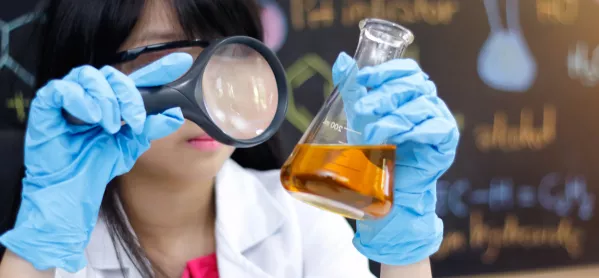- Home
- 4 memorable ways to bring particle states to life
4 memorable ways to bring particle states to life

We regularly use models in science to convey concepts, and we expect students to apply these in their future work to explain observations.
But what if their ideas of the original models are incorrect? Students can end up with major misconceptions of key components to their learning.
This results in teachers having to spend valuable lesson time unpicking basic facts to give students the learning foundation they need for more advanced lesson content.
Read more: How to create curious science students
From the magazine: 4 steps to make maths feel more relevant to pupils
Listen: Why ‘Spatial ability’ could be the key to Stem success
One area where this can occur is the states of matter particle model - in particular, the diagram used for liquids, although gasses cause issues, too.
It doesn’t help that a quick search on the internet throws up many images which do not illustrate particles within liquids correctly.
Correcting this can take time, but there are some practical, fun and, most importantly, memorable ways these misconceptions can be addressed that will give students a solid learning platform to build on.
1. Avoid (air) gaps in knowledge
When I was discussing convection with a class, the students believed that the water being heated became less dense due to there being more air between the particles - a belief which developed from their incorrect recollection of the liquid particle diagram.
This misunderstanding can be addressed with a simple activity involving plastic syringes: fill a syringe with water, put a finger on the end and try to push down on the plunger.
Upon doing this, the students found the plunger could not be pushed down, making them realise that liquids cannot be compressed and therefore do not have “air gaps” between the particles.
This use of syringes can also be developed further to illustrate the compressibility of solids and gases.
2. Act the part(icle)
Getting students to act as particles to aid their recall of arrangement and movement in the different states of matter can also be effective - but this technique must be used correctly to avoid strengthening misconceptions
For example, when acting as particles within a liquid, students understand that the particles have more energy, so usually show this by moving around more and throwing their arms out.
This can lead to further misconceptions as students again believe there is an air gap between particles. Others interpret this as the particles getting bigger when heated by moving their bodies out.
To avoid this, students should be told to keep their arms by their sides when behaving as particles in a liquid to reinforce the idea the particles remain tightly packed within a liquid state.
3. Blow up balloons
It is not just the misunderstanding of the liquid particle model that throws up misconceptions. A fundamental misunderstanding of gases can also affect comprehension of topics later in scientific studies, too.
Students can fail to appreciate that gas particles gain more energy once heated further, after evaporation. This can mean students struggle to process ideas surrounding gas laws.
However, if you heat an inflated balloon a fair distance above a Bunsen burner, the balloon will burst. Demonstrating this can open up a discussion around the idea that the particles have gained more energy, resulting in increased pressure on the balloon.
4. Mass of gas
Many of us science teachers discover, when teaching conservation of mass, that our students do not retain an awareness of gases having a mass. Instead of just explaining this and expecting students to take our word for it, we can demonstrate it so they can see for themselves.
To address this idea, either use a sensitive balance to find the mass of a balloon before and after blowing it up or use a ruler with a balloon attached to either end and make sure it is balanced, suspended from a piece of string. Students will see that gases have a mass upon popping one of the balloons, causing the ruler to no longer be balanced.
In my experience using these quick and easy ideas when teaching states of matter results in a greater number of young people knowing and understanding the correct particle models from an early age.
I have found that less time is then spent in future lessons addressing misconceptions as the students seem to recall, with ease, these simple practical methods.
On top of this, they are able answer questions related to this topic with greater confidence, whether that be in writing or verbally.
Jo James is teacher scientist with the Institute for Research In Schools and a science teacher at Chipping Campden School in Gloucestershire
Keep reading for just £1 per month
You've reached your limit of free articles this month. Subscribe for £1 per month for three months and get:
- Unlimited access to all Tes magazine content
- Exclusive subscriber-only stories
- Award-winning email newsletters